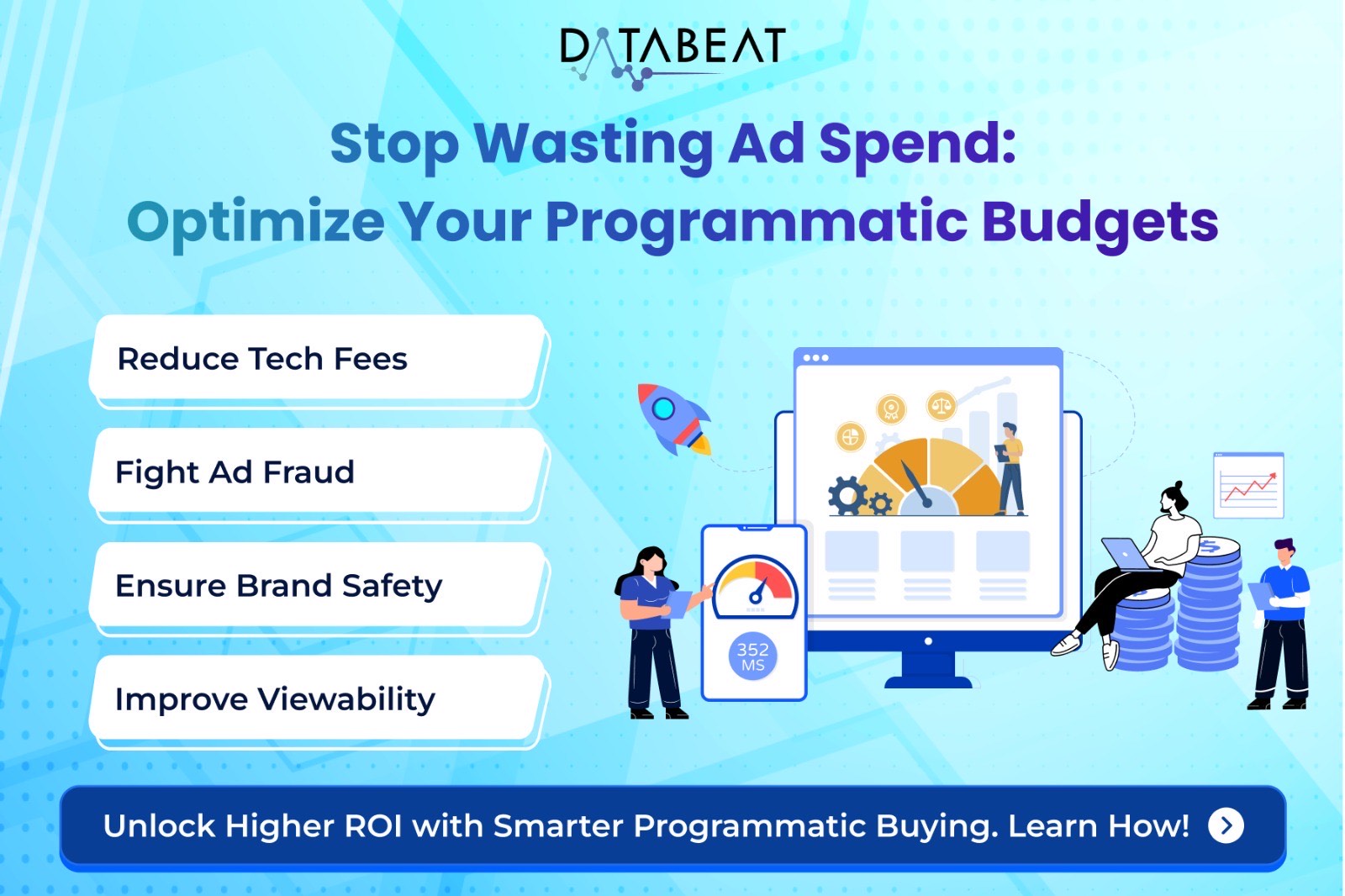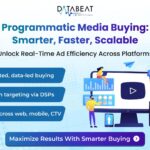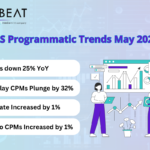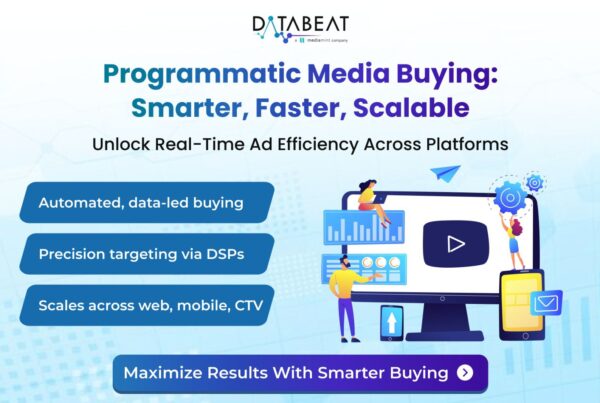
For the most part, programmatic advertising is effective towards everything constructive offering efficiency, precision, and scalability. However, certain intermediary rates could have an effect on the outcome of the campaign beyond just the programmatic bid. Such rates as discrepancies, timeout rates, and unfilled impressions can have a substantial effect on an advertiser’s return on investment (ROI). Without proper management, there is a risk of wasting ad spend, reduced fill rates, decreased visibility, and ultimately campaign failure. Being able to leverage these differences is important to maximizing programmatic advertising.
Provided below are some of the programmatic hidden costs and how to adjust budgets for maximum results.
- Tech Fees & Platform Costs
-
- DSP Fees: All demand side platforms (DSP) have a Platform Fee that comes with a set percentage on top of the ad spend which is usually set anywhere between 10-15%.
- For further information regarding DSP : https://databeat.io/knowledge-base/demand-side-platform/
- SSP & Exchange Fees: Ad exchanges and supply-side platforms (SSPs) take their own share from the impression, even prior to reaching the publishers.
- DMP Costs: Data Management Platforms (DMPs) that contain sections for audience details are subject to fees too.
Optimization Tip:
- To avoid these fees, try using DSPs with Pricing set to zero. Additionally, try ascertaining if the DMP fees are actually worth the investment.
- Ad Fraud & Invalid Traffic (IVT)
- AI programmed click farms and bots can consume 30% of the ad spend reserve and parser impressions can take another 20%.
- AI programmed click farms and bots even with fraud prevention solutions like IVT can go undetected, making the spend pointless.
Optimization Tip:
- Invest in solutions designed to combat fraud such as IAS, DoubleVerify, or MOAT.
- Utilize premium and whitelisted publishers and utilize ads.txt and sellers.json.
👉 For further information regarding Ad Fraud & Invalid Traffic (IVT) :https://databeat.io/knowledge-base/navigating-ad-fraud/
- Brand Safety & Suitability Risks
- Advertising on poor quality and unsuitable content leads to expenditures that either hurt PR or damage it altogether.
- Whitelists, Blacklists and contextual advertising are ways to counter this, however, they come with higher expenses.
Optimization Recommendation:
- Add pre-bid brand safety filters.
- Use third-party verification tools.
👉 For further information regarding Contextual Targeting :https://databeat.io/knowledge-base/contextual-targeting/
- Low Impression Viewability and Missed Opportunities
- Despite being paid for, many programmatic impressions go unseen (e.g., auto-refresh ads, ad-unit placements that are below-the-fold).
- Having ads not being viewed has consequences such as money being wasted as engagement is bound to dwindle.
Helpful Advice For Optimization:
- High-viewability units such as sticky ones and above-the-fold ads need to be prioritized.
- There are bid modifiers that allow setting maximum site bids while also prioritizing viewable impression inventory (e.g. targeting inventory with viewability >70%).
- Supply Path Duplication
- There are multiple or extra middlemen to deal with (SSPs or resellers) that take a cut bringing additional cost per click.
- While advertisers use various SSPs, they are likely to unknowingly outbid themselves.
Helpful Advice for Optimization:
- Eliminate middlemen using supply paths to maximize return on advertising spend.
- Fewer middlemen result in greater visibility, use direct deals or private marketplaces (PMPs) to save money during these transactions.
- Data Costs & Targeting Inefficiencies
- In general, Third-party audience data is costly, needing CPM markups ($1-$5 for every impression).
- A few segments of data defined might be overly used or ineffective.
Helpful Advice for Optimization:
- Perfect targeting starts with first-party data, and so the dilution of effectiveness is minimized.
- When looking to replace segments from third parties, use lookalike modeling instead as it’s relatively inexpensive.
- Auction Dynamics & Bid Inflation
- The use of header bidding results in more competition amongst advertisers which in turn leads to elevated eCPMs.
- Every bidder on the auction is blinded to the set price due to over-bidding because of no automatic optimizations and the absence of bid shading.
Helpful Advice for Optimization:
- When acquiring inventory on first-price auctions, use bid shading to reduce overspending.
- Set up frequency caps to prevent unnecessary bidding.
How do Advertisers allocate their Programmatic Budget?
- Advertisers strategically allocate their programmatic budget based on campaign goals, audience targeting, and performance optimization.
- The allocation typically follows a structured approach across different media channels, buying models, and optimization strategies.
Budget Allocation by
1. Buying Models
- Open Exchange (RTB) – 30-50% (Broad reach, efficiency).
- Private Marketplace (PMP) – 20-40% (Premium placements, better control).
- Programmatic Guaranteed (PG) – 10-25% (Guaranteed impressions, brand safety).
- Preferred Deals – 5-15% (Priority access, flexible pricing).
Tip: Prioritize PMP & PG for premium inventory while using RTB for scale.
2. Inventory Type
- Display Ads – 25-40% (Awareness, retargeting).
- Video Ads – 30-50% (Branding, engagement).
- CTV & OTT – 10-30% (Premium audiences, storytelling).
- Native Ads – 5-15% (Content-driven engagement).
- Audio & Podcast Ads – 5-10% (Niche targeting, brand recall).
Tip: Invest more in video, CTV, and native ads for higher engagement.
3. Audience Segments
- Prospecting (New Users) – 40-60% (Brand awareness, new acquisition).
- Retargeting – 20-40% (Conversions, lower-funnel engagement).
- Lookalike Audiences – 10-30% (Expanding reach, high-intent users).
- CRM & First-Party Data – 10-30% (Loyalty programs, high-value users).
Tip: Maintain a balance between prospecting and retargeting.
4. Campaign Objective
- Brand Awareness – 40-60% (New customer acquisition).
- Consideration (Mid-Funnel) – 20-40% (Engagement, lead nurturing).
- Conversion (Lower-Funnel) – 20-40% (Sales, sign-ups, app installs).
Tip: Focus more on awareness and mid-funnel for long-term growth.
5. Ad Formats
- Standard Banners (Display) – 20-30% (Cost-efficient reach).
- Rich Media & Interactive Ads – 10-25% (Higher engagement).
- Instream Video (Pre-roll, Mid-roll) – 25-40% (High attention, brand recall).
- Outstream Video (Floating, Native Ads) – 10-20% (Expanded reach).
- CTV & OTT – 10-30% (High-impact branding)
Tip: Prioritize instream video and CTV for maximum engagement.
How to Optimize Budgets in Programmatic Buying?
- Consolidate Spend with Fewer DSPs & SSPs
- Reduces duplicate expenses and increases visibility.
- Better data consistency across platforms.
- Invest in Private Marketplaces (PMPs) & Programmatic Guaranteed (PG) Deals
- Less spending on low-viewability ad placements.
- Better protection from fraud in advertising.
- Shift Toward First-Party Data & Contextual Targeting
- Less spending on expensive third-party data.
- Prepares for a cookieless future.
- Implement AI-Driven Optimization
- Use AI powered bidding techniques such as Google’s tROAS or tCPA to increase efficiency.
- Regularly Audit & Optimize Supply Paths
- Identify and eliminate cost inefficient SSPs or intermediaries with high fees.
- Monitor KPIs Beyond CPMs (Viewable CPM, Conversion Rates, ROI)
- Focus on performance metrics that matter and not the cost per impression.
Conclusion
- PG, PMP, and Open Exchange can be combined. This approach ensures careful moderation of spending while also reserving high level inventory.
- Focus on Video, CTV, and Native Ads. This approach will increase the engagement and recall of the brand.
- Allocate budget smartly: Awareness 40% – 60%, Consideration 20% – 30%, Conversion 10% – 20%.
- Better Targeting and Savings from First Party Data + AI Bidding.
- Reduction of hidden costs determines the advertising budget in programmatic buying.
- Advertisers need to focus on reduction of hidden costs in programmatic buying.
- Using SPO, AI bidding, first party data, and working with publishers directly enables brands to be more efficient and increase ROI.
How can DataBeat help to optimize budgets ?
We at DataBeat, empower advertisers with data-driven budget strategies that maximize impact and efficiency. From setting the right budget to strategically allocating spend across different inventory types, we provide precise percentage breakdowns tailored for success. Our continuous monitoring ensures real-time optimizations, helping advertisers adapt and reallocate budgets for the best performance. With a forward-thinking approach, we forecast industry shifts and equip advertisers with proactive budget strategies keeping them ahead of the curve and maximizing their ROI. Click here to get your custom strategy.









